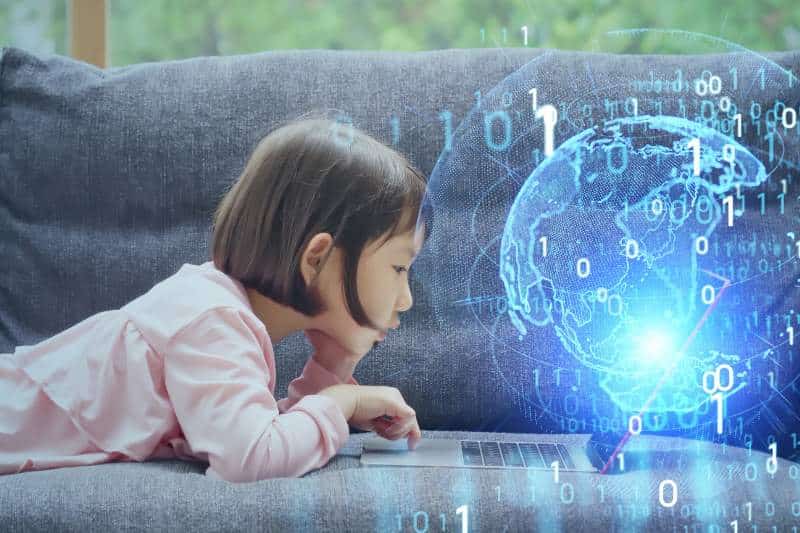TECHNOLOGY IN EDUCATION: INNOVATIVE RESOURCES TO IMPROVE EDUCATIONAL QUALITY

Technology in education is a set of Information and Communication resources processes and tools applied to the structure and activities of the educational system in its various fields and levels.
WHAT ROLE DOES TECHNOLOGY HAVE IN EDUCATION?
When educational problems find a solution in the use of information technology, that is, in the use of computers and more telecommunications equipment for storing, transmitting and manipulating data, we speak of technology in education.
In other words, we understand that technology in education is about the use of technological devices for educational purposes.
Currently, the personnel of educational centers have the possibility of acquiring internet, computers, digital boards, mobile phones and tablets to share their knowledge or organize classes and assignments.
These facilities have managed to adapt educational methods to the digital age, where there is a greater number of teaching and learning resources for both teachers and students.
Students can access much more information through the implementation of new technologies that, incidentally, also open new spaces for fun and expression, such as games and blogs.
WHAT ARE THE PILLARS OF EDUCATIONAL TECHNOLOGY?
The new educational models have been created under the awareness that the future of our society depends on three technological areas namely: programming, robotics and 3D printing.
These areas are the pillars of technology in education:
PROGRAMMING
Teaching programming goes beyond preparing students for a technological job field. Students solve self-correction processes, as they learn to locate errors in complex problems.
Programming works by promoting the learning of logic, creativity, finding solutions and entrepreneurship.
ROBOTICS
Robotics is the subject that allows you to program a device or robot, teaching it a set of instructions so that it can execute them autonomously.
Programming a robot allows students to physically see programming errors and their limits, as well as learn to use precise language.
Learning this subject provides a solution to the growing demand for science and engineering in future jobs since thanks to the advances of the digital age people capable of programming these devices will be needed.
3D PRINT
3D printing is becoming very important for the design of models or prototypes in various areas of our lives.
Medicine, engineering, textile industry and more use this technology successfully. It can also be used for geography and art.
Thanks to 3D printing, students learn about new technologies and their use, but it also helps them understand complex theories since it exemplifies them.
WHAT CHANGES HAS TECHNOLOGY BROUGHT TO EDUCATION?
A few years ago, students could only access education in person. They had large quantities of books and notebooks, and searching for information manually was much more time consuming. Information on paper was indispensable.
Technology brought with it the ability to study online which simplifies access to education in terms of time and place finding information is much easier and huge databases can be accessed quickly.
Today people can access information from any smart device and even attend conferences through video calls.
The creation of projects is much easier since technology brought new tools that supplant the paper. In short, technology in education has made learning easier, more comfortable, and even affordable.
The digital age does not stop, so it is important that teachers and specialists are aware of new technologies in order to prepare their students.
WHAT ARE THE ADVANTAGES OF TECHNOLOGY IN EDUCATION?
The advantages of technology in education are numerous.
Students can interact, play and learn from various platforms, which fosters a climate of participation during classes. They can also learn at a distance and at flexible times, and customize their lessons according to their needs.
As for teachers, they have excellent organizational, planning, and teaching tools, saving a great deal of time for reviewing or moving forward faster.
Technology platforms can integrate all school staff, as students share concerns, teachers manage their groups, and administrators monitor class achievements.
Thanks to technology in education, school personnel can be aware of their students and attend to their needs. There are educational software to identify early the risk of dropping out, this in order to provide support to students.
We will also mention that betting on technology in education implies in the long run great economic savings and even ecological care since class materials and even transportation to attend a lesson may not be necessary.
WHAT CAN WE EXPECT FROM EDUCATIONAL TECHNOLOGY IN THE FUTURE?
The digital age is going by leaps and bounds technology focused on education cannot and should not be left behind.
One of the most important aspects to focus on is controlling student learning. The monitoring and revision of the students is an important factor for the incorporation of technologies within any class.
In the end, the technological tools are focusing on providing a solution for the monitoring of the students and above all so that they can learn and adapt to the constant changes in technology.
Another aspect is that students no longer have to follow the rhythm dictated by the teacher, which eliminates part of the student’s tension towards learning.
In this way the student develops skills and aptitudes in his own time, form and taste in a totally personalized way.
CONCLUSION
The educational environment is in a process of transition. Society is evolving from an industrial mindset to a fully computerized approach.
The daily life of people is changing and they are facing new tools that manage to make the old methods of exercising an activity disappear.
An example of this is the success of shopping online, also the approach with companies through social networks. Such everyday interactions with technology have changed the world and therefore educational methods.
Schools have to leave behind the old paradigms that prepare people for a world that is ceasing to exist, that is, for an industrial society. The way schools manage time, the division of subjects, the bureaucracy of the school itself, as well as the hierarchy between administration, teachers and students is a preview of what would await the student in an industrial world.For More Information Please Visit www.lifestylebuz.com






